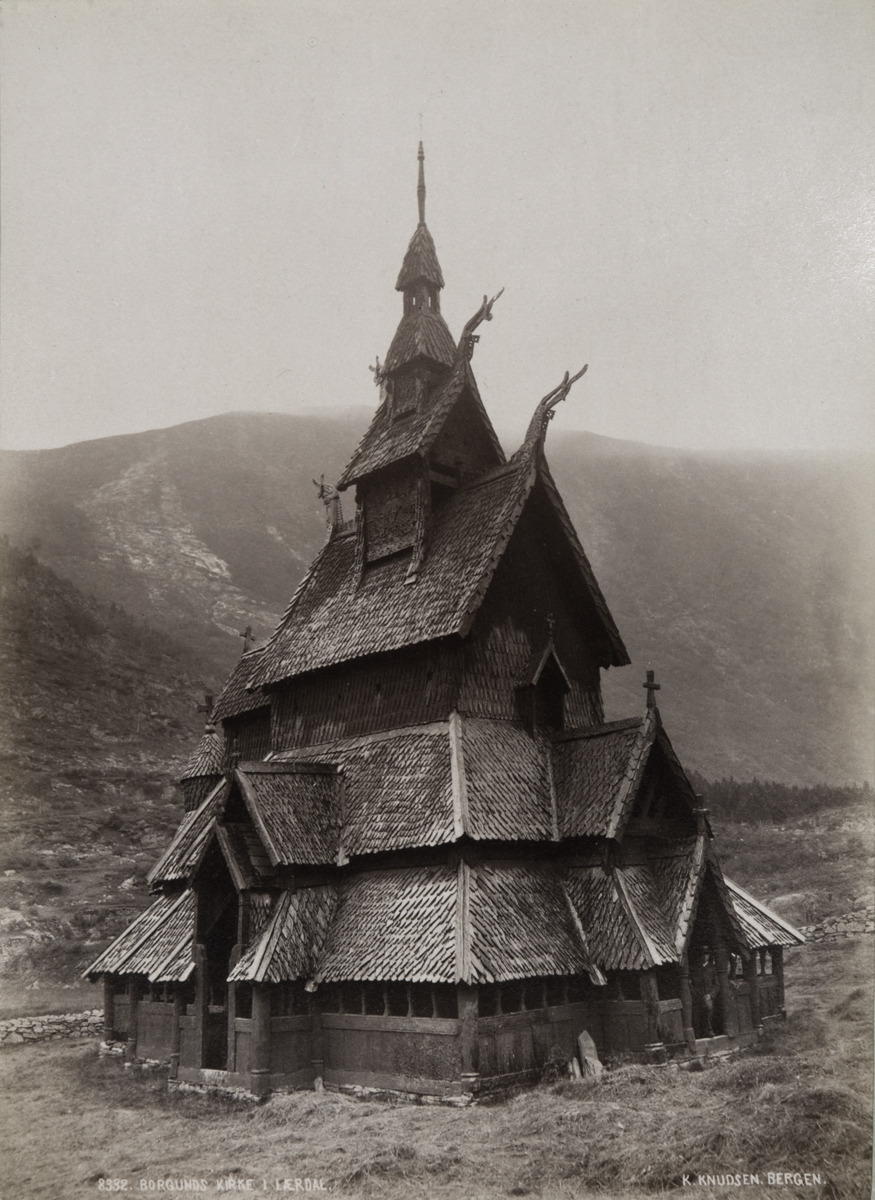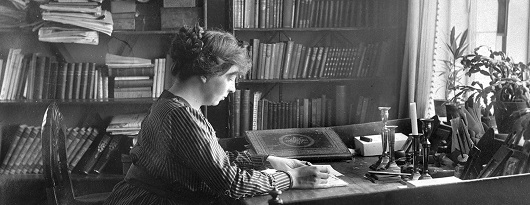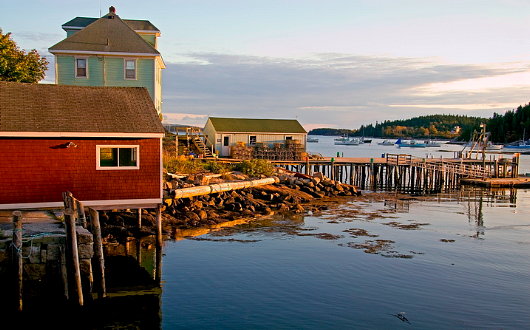Sigrid Undset
About Andrew Cusack
 Writer, web designer, etc.; born in New York; educated in Argentina, Scotland, and South Africa; now based in London.
Writer, web designer, etc.; born in New York; educated in Argentina, Scotland, and South Africa; now based in London. read more
News
Blogs
Reviews & Periodicals
Arts & Design
World
France
Mitteleuropa
Knickerbockers
Argentina
The Levant
Africa
Cape of Good Hope
Netherlands
Scandinavia
Québec
India
Muscovy
Germany
Academica
Stave Churches
The category of the Stave Church is the only great Norwegian contribution to architecture.
Sigrid Undset attempts to explain why other contributions are scant:
As one of the most extensive and thinly settled countries in Europe, Norway possesses only a few architectural monuments.
There is a good reason for this.
In the Middle Ages Norway belonged to a united, Christian Europe. At that time art flourished here, though the artists themselves are nameless because their work was deeply rooted in the people. Their power of expression streamed from the people through them. This creative power left its imprint on us in the form of buildings and pictures, poems and music.
Then came the spiritual earthquake of the sixteenth century, the Renaissance and the Reformation. Norway was cut off. It became a land apart, and lost touch with the spiritual life of Europe. Much later our increasing world trade again brought us into contact with other countries.
Pester Lloyd, 1932
But at least we have the stave churches.

Understanding Undset

Sigrid Undset’s is doubtlessly among the twentieth century’s greatest writers, even though Kristin Lavransdatter, her main works of literature, is set in the fourteenth century. At the ceremony awarding Undset the 1928 Nobel Prize for Literature, Per Hallström described the writer’s narrative as “vigorous, sweeping, and at times heavy”:
It rolls on like a river, ceaselessly receiving new tributaries whose course the author also describes, at the risk of overtaxing the reader’s memory. […] And the vast river, whose course is difficult to embrace comprehensively, rolls its powerful waves which carry along the reader, plunged into a sort of torpor. But the roaring of its waters has the eternal freshness of nature. In the rapids and in the falls, the reader finds the enchantment which emanates from the power of the elements, as in the vast mirror of the lakes he notices a reflection of immensity, with the vision there of all possible greatness in human nature. Then, when the river reaches the sea, when Kristin Lavransdatter has fought to the end the battle of her life, no one complains of the length of the course which accumulated so overwhelming a depth and profundity in her destiny. In the poetry of all times, there are few scenes of comparable excellence.
Obviously Kristin Lavransdatter must be read for itself. I started reading it in the Stellenbosch University library a decade ago and was able to finish it thanks to being given a copy by a kindly Premonstratensian.
But the woman behind Kristin wrote more: her biographical essays and other works (like the one describing a visit to Glastonbury) are just as enjoyable and insightful.
At First Things, Elizabeth Scalia describes Undset’s lives of saints and holy men and women in Sigrid Undset’s Essays for Our Time.
Stephen Sparrow reveals much of Undset’s own biographical detail and how this influenced her writing in Sigrid Undset: Catholic Viking.
But the best essay I’ve read on Sigrid Undset so far is David Warren’s meditation on womanhood, motherhood, and Kristin Lavransdatter. I don’t agree with everything he says (I rather enjoyed the new translation but am thinking I might have to give the old one a go), but David gets Kristin the character, gets Kristin the novel, and gets the way that life is refracted through both.
Read David Warren, then read Sigrid Undset.
The Cusackian Academy
The other day I started drawing up a list. It started out as a list of people you should know, but then it took on its own life in the realms of my imagination as an assemblage of notables whether of thought, word, or deed. There is, of course, an Académie française, so why not an Académie cusackienne?
Membership of this list does not necessitate approval or sanction. It is more that these are the stars that speckle the Cusackian sky and in some way shine down providing some form or another of illumination. Some I like, others I admire, others still I disapprove of but at least find amusing.
As you might expect, it’s rather French-heavy, with a disproportionate dash of Magyars as well. Needless to say, very few of these illustrious academicians are still amongst the living. (more…)
Some Norwegian Catholics
Writers, politicians, journalists, academics — Norway’s Catholics seem an intellectual bunch. The Church in Scandinavia is on a slow but steady ascendant, and it’s telling (of both the rise and fall of many) that there are now more seminarians studying for the priesthood for the Nordic countries than there are for all of Ireland.
As a Norwegian acquaintance of ours was ordained for the Diocese of Oslo within the past year, I thought a little jaunt through a handful or two of Norwegian Catholics might be interesting. There are some I would have liked to included — the conversion of the former Lutheran ecumenist Ola Tjørhom provoked controversy and Wilhelm Wedel-Jarlsberg preceded Christopher de Paus as a papal chamberlain — but there is only so much time and space and effort.
Of those mentioned here below, only Sigrid Undset has achieved worldwide fame. Her work Kristin Lavransdatter is an absolute must for any serious reader of literature and was recently re-translated into English by Penguin. (more…)
Maine
Well, your humble and obedient scribe is retreating to the coast of Maine, whence the defeated loyal men of Berwick fled after suffering defeat at the hands of the wretched Cromwell in the Battle of Dunbar. I am bringing a few friends along, including Mssrs. Trollope, Goethe, Burns, Chesterton, Balzac, von Rezzori, and a Ms. Undset (I am finally more than two-thirds of the way through Kristin Lavransdatter). There may also be a corgi or two. Internet connectivity very sketchy in those parts, though I will see if I can send a pigeon back to Hogarth if any news. (Doubtful it would do any good; the last e-mail I had him send he instinctively translated into dots and dashes — he does remind me of Uncle Otto sometimes).
So I bid you farewell, and you can expect my return in a fortnight’s time, invigorated anew by the salty breeze.
Search
Instagram: @andcusack
Click here for my Instagram photos.Most Recent Posts
- Gellner’s Prague December 19, 2024
- Monsieur Bayrou December 18, 2024
- Dempsey Heiner, Art Critic December 17, 2024
- Vote AR December 16, 2024
- Articles of Note: 12 December 2024 December 12, 2024
Most Recent Comments
Book Wishlist
Monthly Archives
Categories



